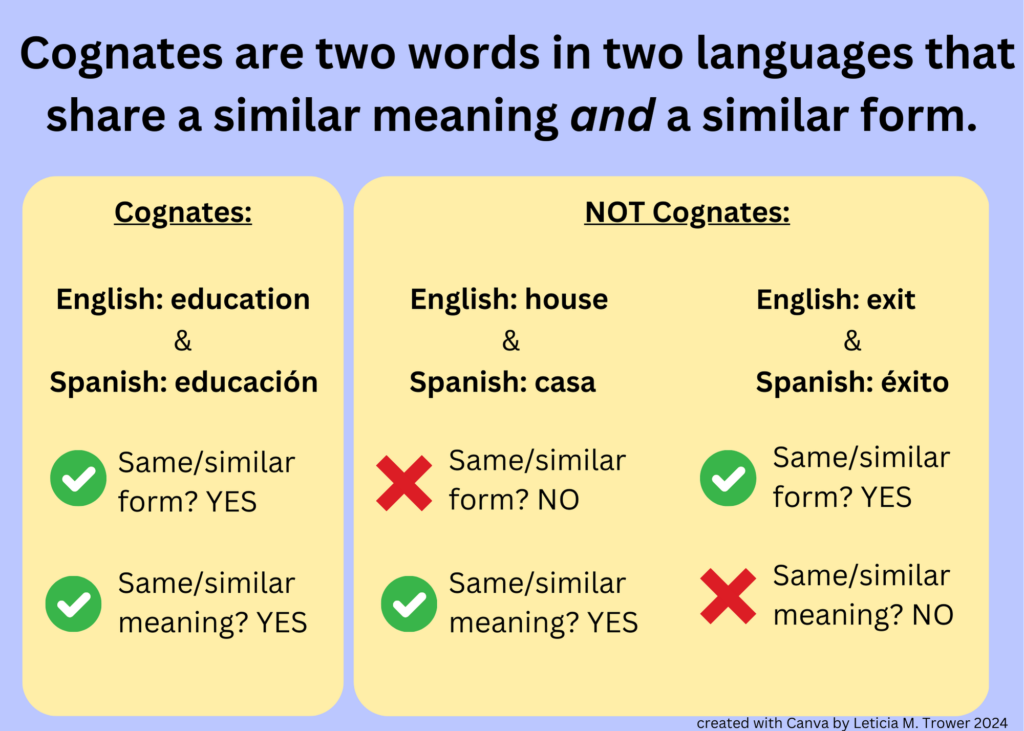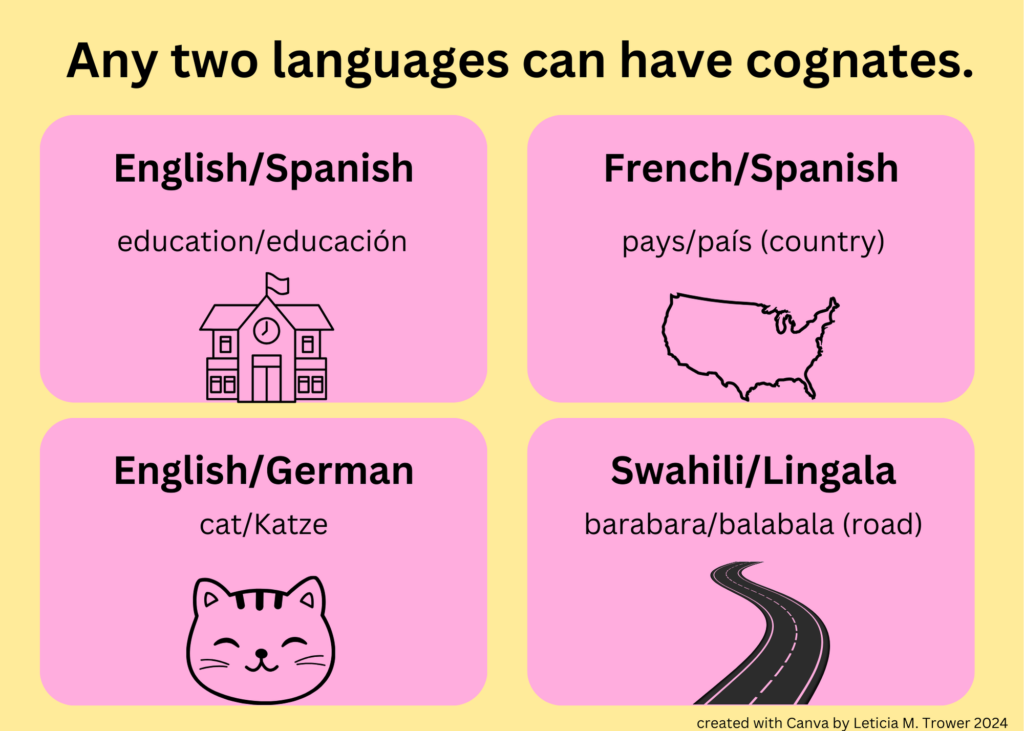by Leticia M. Trower
In my work with teachers over the last two decades, “use cognates” has always been – and continues to be – a common tip for working with multilingual learners. But what exactly is a cognate – and why should I use cognates to support learning? Here are some misconceptions about cognates that I have come across in my work, followed by a list of benefits of using cognates.
Misconception #1: “Cognate” is the same thing as “translation.”
It is important to know what a cognate is – and what it is not. Cognates are two words in two languages that share a similar meaning AND a similar form. For example, the English word education and the Spanish word educación are cognates because they mean the same thing AND they are spelled almost exactly the same.
The English word house and the Spanish word casa, however, are NOT cognates: they mean the same thing, but they do not look or sound alike.
Similarly, the English word exit and the Spanish word éxito are also NOT cognates: they look and sound alike, but they do not mean the same thing. (Éxito means success, not exit). Pairs like this, that look or sound like cognates but aren’t, can be tricky! We call them false cognates, and you need to watch out for them.

Misconception #2: Cognates only exist between English and Spanish
Since the vast majority of multilingual learners in US schools speak Spanish as their first language, it is understandable that Spanish gets more attention in discussions about MLs. However, this sometimes leads to oversimplifications, overgeneralizations, or misconceptions. One that I’ve noticed is people defining cognates as “a word in English and a word in Spanish that…”. In fact, ANY two languages can have cognates! They are common in English/Spanish because Spanish is a descendant of Latin, and English has borrowed many Latin words over the years. You can also find words derived from Latin as cognates across several of the Latin languages, like French/Spanish/Italian. English/German cognates are common as well, because English and German are related. But ANY two languages may have a cognate or two between them!

Misconception #3: If I point out a cognate, then my student understands the English word.
While it can be very helpful to use cognates to help students as they learn more English, we need to recognize that cognates aren’t magic wands. For example, let’s consider the English/Spanish cognate pair hypothesis and hipótesis. If I have a 3rd grade student who is fluent in Spanish but is still learning English, can I tell them that hypothesis is hipótesis in Spanish and call it a day? Well, let’s flip it: how many English-speaking 3rd grade students understand the English term hypothesis so well that they can succeed on classroom assessments about hypotheses? If the answer isn’t “all of them,” then we know that no matter what language a 3rd grade student speaks, they are likely to need some instruction on what a hypothesis is. In this case, using the cognate can be very helpful — but it is not likely to be all the student needs.
Benefits of Pointing Out Cognates
Cognates do more than just help students understand English words! Here are some of the benefits of pointing out cognates to students, whether they already know the word in their language or not:
- Accelerates & deepens understanding of English vocabulary
- Places value on the students’ home language (L1)
- Helps students continue to develop their L1 — which has myriad academic, social, and economic benefits
- Forges and/or strengthens connections between English and the student’s L1
- Prompts all students (bilingual or not) to think about words in a new way
So, take a moment to search for cognates related to your next lesson topic — you may be surprised what you and your students end up learning!